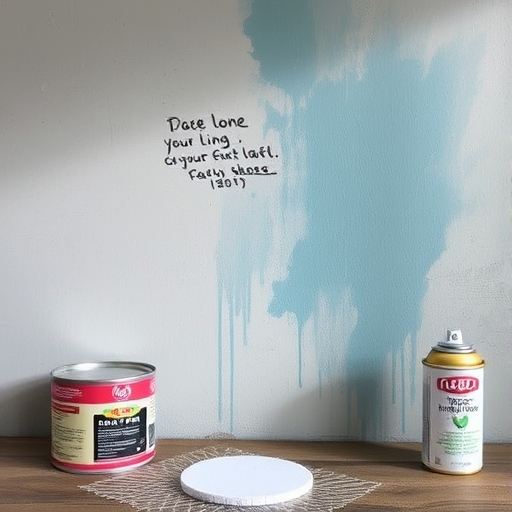How Long Does Spray Paint Take to Dry?
When it comes to DIY projects, spray paint is a popular choice for its versatility and ease of use. However, one of the most common questions that arise during a painting project is, “How long does spray paint take to dry?” Understanding the drying times can help you plan your project effectively, ensuring that you achieve the best results without unnecessary delays.
We will explore the factors that affect spray paint drying times, provide a comparison of different types of spray paints, and offer some tips for achieving the best finish.
Understanding Spray Paint Drying Times
Spray paint drying times can vary based on several factors, including the type of paint, environmental conditions, and the surface being painted. Generally, spray paint goes through a few drying stages:
-
- Touch Dry: The paint feels dry to the touch but may still be soft underneath.
- Handle Dry: The paint is dry enough to handle without smudging.
- Fully Cured: The paint has reached its maximum hardness and durability.
Typical Drying Times
| Type of Spray Paint | Touch Dry (minutes) | Handle Dry (hours) | Fully Cured (days) |
|---|---|---|---|
| Acrylic Spray Paint | 10-30 | 1-2 | 5-7 |
| Enamel Spray Paint | 30-60 | 2-4 | 7-14 |
| Lacquer Spray Paint | 10-20 | 1-2 | 24-48 hours |
| Specialty Spray Paints | Varies | Varies | Varies |
Factors Affecting Drying Time
1. Type of Paint: Different formulations of spray paint have varying drying times. For instance, acrylics dry faster than enamels.
2. Environmental Conditions: Temperature and humidity play crucial roles in the drying process. Higher temperatures can speed up drying, while high humidity can slow it down.
3. Surface Material: The material you are painting can also affect drying time. Porous surfaces like wood may absorb paint and take longer to dry compared to non-porous surfaces like metal or plastic.
4. Thickness of Application: Applying a thick coat of paint will naturally take longer to dry than a light misting.
5. Airflow: Increased airflow can help paint dry faster. Working in a well-ventilated area can speed up the drying process.
6. Brand Variations: Different brands may have unique formulations affecting drying times.
Tips for Faster Drying
If you’re eager to speed up the drying process, consider the following tips:
-
- Work in a Warm Environment: Aim for a temperature between 65°F and 85°F (18°C – 29°C) for optimal drying conditions.
- Use a Fan: Increase airflow in the painting area to help evaporate solvents more quickly.
- Thin Coats: Apply multiple thin coats instead of one thick coat to reduce drying time.
- Choose the Right Time of Year: If possible, paint during dry seasons when humidity levels are lower.
- Follow Manufacturer Instructions: Always check the label for specific drying times and recommendations.
Common Mistakes to Avoid
To achieve the best results with spray paint, avoid these common mistakes:
- Skipping the Prep Work: Failing to properly prepare the surface can lead to poor adhesion and longer drying times.
- Painting in High Humidity: Avoid painting on rainy or humid days, as this can significantly slow down the drying process.
- Not Allowing Enough Drying Time: Rushing to handle the painted item before it’s fully dried can lead to smudges and imperfections.
FAQ
1. Can I speed up the drying process?
Yes, you can speed up drying by ensuring good ventilation, using a fan, and painting in a warm environment.
2. What is the difference between touch dry and fully cured?
Touch dry means the surface feels dry, but the paint may still be soft underneath. Fully cured means the paint has hardened entirely and is at its maximum durability.
3. Can I apply a second coat of spray paint too soon?
Yes, applying a second coat too soon can lead to runs and drips. Always follow the recommended drying times before applying additional coats.
4. Is it safe to spray paint indoors?
If you choose to spray paint indoors, ensure proper ventilation and consider using a mask to avoid inhaling fumes.
5. How do I know when my spray paint is fully cured?
The paint will feel hard and no longer be tacky to the touch. Additionally, you can perform a light scratch test in an inconspicuous area to check for softness.
Conclusion
Understanding how long spray paint takes to dry is essential for anyone undertaking a DIY project. The drying time can vary based on the type of paint, environmental conditions, and application methods. By following the tips outlined in this article, you can optimize your spray painting experience and achieve professional-looking results. Always remember to allow adequate drying time between coats and be patient for the paint to fully cure to ensure a durable and beautiful finish.
By taking the time to understand the nuances of spray paint drying times, you can enhance your craftsmanship and enjoy a successful DIY project. Happy painting!

